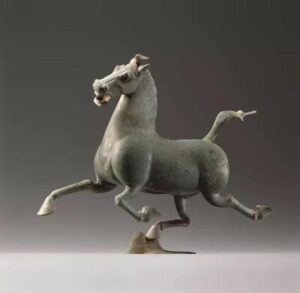1.At the beginning of this episode, Krukowski asserts, “the marginal-the rejected-the repressed-is whatever the powerful have decided is of no use at the moment.” What does he mean by this statement? He goes on to ask, “But might it [the marginal-the rejected-the repressed] not be a key to alternate approaches-to art, to society-to power itself?”What is he trying to get at with this question? How does music indicate the differences between the powerful and the marginalized?
The author says when he enters the record store, he finds that those albums and records are preserved for long time. And they seem to be outdated. Nowadays, people prefer to download music from Internet rather than go to record stores and pick CDs. But it doesn’t mean that those albums or songs are useless for our society. They provide a new view of art for us. In addition, in some record stores, when you pick your favorite albums, you can talk to anyone in the stores. They are interesting and conversable. You can get lots of information from them.
2.How are the music listening experiences enabled by Forced Exposure different from those that Paul Lamere is working on with platforms like Spotify?
In this podcast, according to him, the composition of music is culture and our society. For music platform like Spotify, what they need to do is focus on technology and data. They need to develop their machines, pay attention to listeners’ comments and follow the trend.
3.What distinctions does Krukowski draw between being “surprised” by music and “discovering” music? What are the differences between these experiences and according to Krukowski, why are they important?
Being “surprised” by music is that you have never heard that before. It is totally new for you which may draw your curiosity. But “discovering” is the opposite side of it which means you know clearly about what you are looking for. You listen or search it with definite purpose. Like you want to find the answer on Google. The answer will not surprise you. With the development of technology, the music platform can use data base to analyze and predict our interests and tastes in music, so it is harder for us to be surprised by music.
4.According to Krukowski, what is noise? What is signal? Why are these distinctions important?
According to Krukowski, signal is significant sound we can hear and something what we are trying to pay attention to. Except for signal, the rest of the sound is noise. What signal and what is noise all depend on your brains. But in musical studio, the clarify of signal and noise is determined by musicians. Their arrangement of it will maximize your enjoyment of music.
5.What central idea about noise does this episode convey? Why is it significant?
The signal in music is something that the producers want listeners to hear. So, they try to maximize the volume or influence of it. Meanwhile, they use technology to remove the noise. However, we cannot remove it, what we can do is to reduce it. Noise is inevitable.
6.How does this episode relate to other episodes?
The essence of music or sound is two things—–signal and noise. All the effort we put is to get the signal and reduce the noise.




